When the sun is in just the right spot in mid-July, in the early evening or around 8 a.m. in the morning, the fields in Provence appear to glow with every shade of bluish purple. Surrounded by gray roads, light brown soil, green grass and red-roofed houses, the lavender and lavandin can be seen in all their glory just before the harvest. The Labiatae, which dominate the region like no other plant, have been cultivated here for hundreds of years and are now managed by more than 2,000 small- and medium-sized companies. The plants are popular throughout France and well beyond: as fresh and dried bunches sewn into small sacks to distribute their unique scent, as seasoning for foods and as taste nuances in traditional honey.
But a majority of the harvest goes to the fragrance industry – the popular lavandin as a natural ingredient in soaps and in detergent fragrances and the elegant lavender oil as an important component in the finest perfumes. Lavender is also what has brought Aliénor Massenet from Paris to Ferrassières today, a village with 110 residents, 80 kilometers east of Avignon. The Senior Perfumer, who has been created the finest fragrances for the past 25 years, comes to a stop just inside the limits of the city. She wants to look around, but first has to walk along the dry, stony ground for a few minutes, past all the breathtaking purple. “The first perfumes that I remember smelling as a child had lavender as one of the top notes,” she says, occasionally caressing the blossoms with her hands and catching the scent of the plants. “It’s a fond memory for me.”
More diversity with white lavender
The scent also accompanies Aliénor in her work today. “Lavender features fruity and floral notes, but also aromatic savory and herbal nuances.” For her, a visit to Provence is a true experience. She’s familiar with the landscape, but has never been so close. “I’d like to see how the farmers cultivate the plants, how they care for and harvest them, so that I can better understand the product that I process for my compositions.” But today she’s not interested in the bluish-purple variety. Aliénor Massenet comes to a stop. She glances at the field, in which something particularly special is growing: white lavender, which is unique as a raw material in the perfumery world.
“Lavende Angèle” is the name of the new variety. It’s one of the findings of a far-reaching project that Symrise launched in Provence in 2012 and has supported ever since. The idea came about during a visit by the junior talents from the Symrise perfumery school, who wanted to see and, especially, smell the plants in the region. The young perfumers also visited the independent research institute, Centre Régionalisé Interprofessionnel d’Expérimentation en Plantes à Parfum, Aromatiques et Médicinales (CRIEPPAM), which is located in Manosque, about an hour outside of Ferrassières. “When we visited the greenhouses in which some 150 lavender varieties are cultivated and analyzed, I spotted a plant with white blossoms,” says Béatrice Favre-Bulle, Senior Vice President Perfumery Excellence & Sustainability, who is also standing on the field in Provence today to view the results. “I thought that was very unusual and interesting and asked if CRIEPPAM would be able to distillate this plant for us in larger numbers.” The idea was that a new variety might make it possible to develop new fragrance profiles and greater variety in the range of compositions. “This first distillation was so promising that we decided to continue with the experiment,” says Béatrice Favre-Bulle. The company produced small samples in the laboratories in Holzminden, which gave impressive results. “We have developed a new variety exclusively for our Symrise perfumers with a unique olfactory profile. One-of-a-kind and exclusive creations can be developed for our customers with this new natural fragrance.”
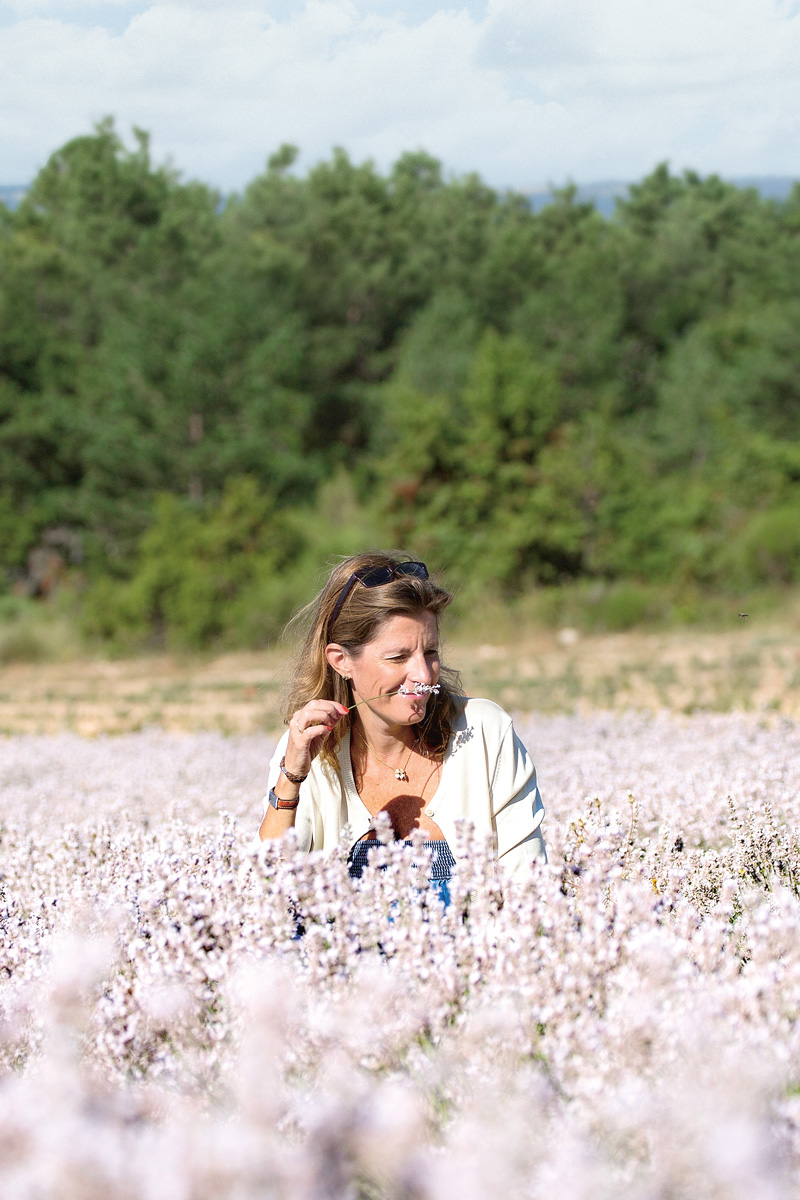
“The first perfumes that I remember smelling as a child had lavender as one of the top notes. It’s a fond memory for me.”
Aliénor Massenet
Senior-Parfümeurin bei Symrise
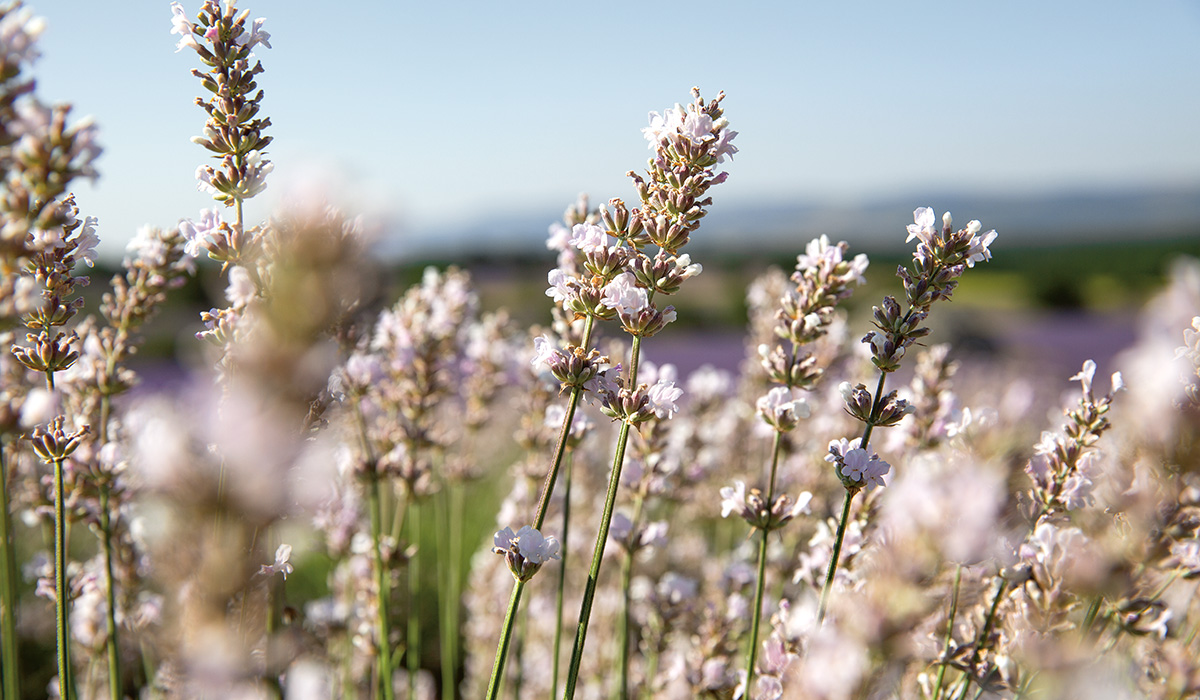
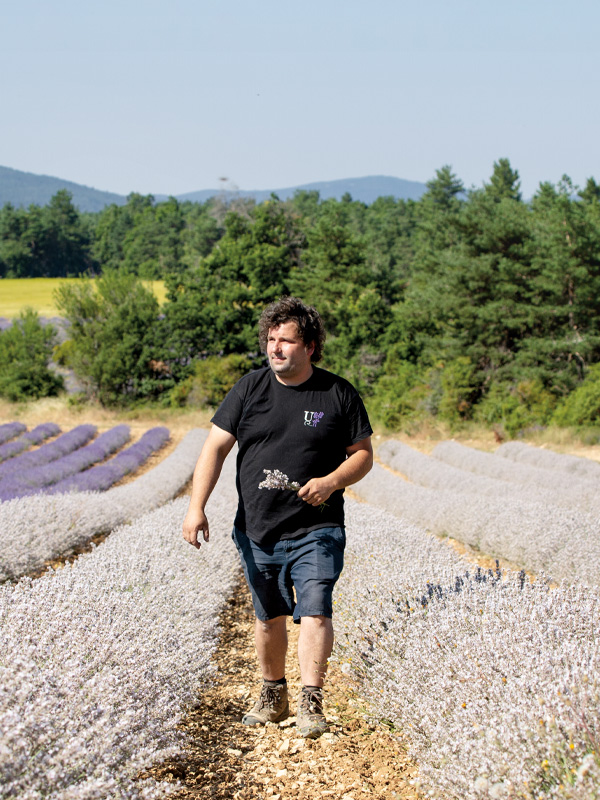
Plants have increased resistance
Bert Candaele is responsible for the project on CRIEPPAM’s side. Commissioned by Symrise, the head of the research institute and his employees bred the white lavender and in the process helped to find a farmer for the cultivation. Rudy Usseglio, who is also the Chairman of the research institute, provided around 8,000 m2 of land out of his 350 hectares for the project. Today, the two of them are in the field inspecting the plants with Béatrice Favre-Bulle and Aliénor Massenet, discussing the soil and options for improving cultivation. And their work goes far beyond the discovery of new varieties.
“For example, we try out a variety of approaches in our laboratories and on our testing fields to make the plants more resistant to the stolbur phytoplasma bacterium. It’s transmitted by tiny cicadas and has led to a decline in the region’s harvest in recent years,” says the scientist. “We also want to improve plant growth and the quality of the oil produced by the distilleries on behalf of customers such as Symrise.” For example, the rows of plants, which are straight as an arrow, need to be freed of weeds to the highest degree possible using agroecological methods, as these otherwise end up in the distillation process following harvest and can thus change the profile of the lavender oil. To minimize erosion, the scientists plant a variety of other species between the rows to secure the valuable soil and hold it in place. “They also help keep cicadas at bay, which transmit the bacterium to the plants. The use of pesticides is not possible due to the bees that pollinate the lavender,” explains Candaele. CRIEPPAM lays out dozens of test rows to determine the best cultivation options and applies the findings to Rudy Usseglio’s field. “I think it’s really exciting, because it gives me the opportunity to try out new methods that I could possibly apply to other lavender varieties,” says the farmer, who, like many larger companies, operates his own distillery. “I also get to learn a great deal about the customers’ requirements, which I can then apply to my work.”
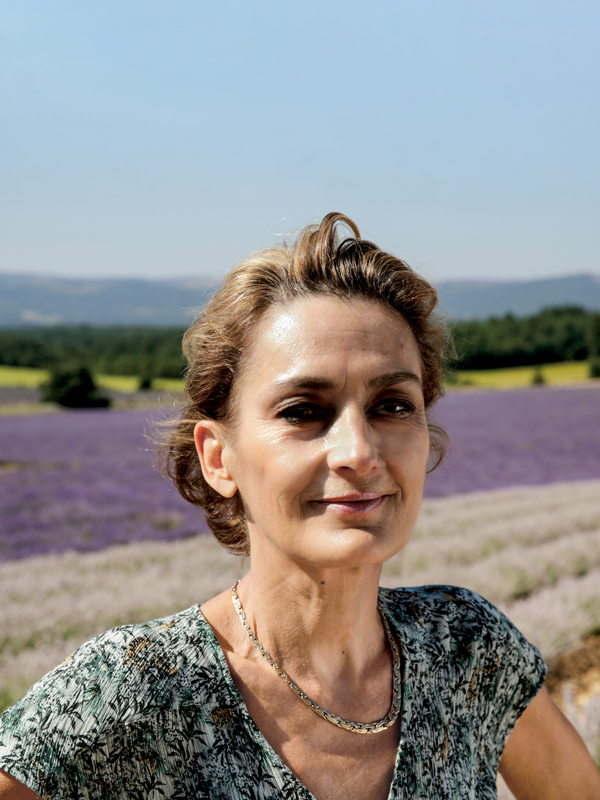
“We have developed a new variety exclusively for our Symrise perfumers with a unique olfactory profile. One-of-a-kind and exclusive creations can be developed for our customers with this new natural fragrance.”
Béatrice Favre-Bulle,
Senior Vice President Perfumery Excellence & Sustainability
Quality and biodiversity increase
Another aspect that’s increasingly important is protecting biodiversity – and, most importantly, the bees. Hundreds of thousands of insects fly from blossom to blossom on a single hectare, as can be seen everywhere on the fields surrounding Ferrassières. Too many of them have already been killed by the machines during automated harvesting. That has led to a permanent decline in the population – especially because the bees are already in considerable danger due to the decline in biodiversity in recent years. A harvester developed by CRIEPPAM represents a solution. A specially created pipe placed in front of the cutting tool ensures that the number of bees that die during the harvest is reduced by 50 %. That’s a huge step for the industry, and is just the beginning. At the same time, the “Espieur” – as the machine is called – only removes the top third of the plants, meaning the blossoms without the stems. As a result, less material needs to be transported to the distilleries, thus reducing the diesel costs associated with transport. “Because less raw material needs to be processed, the distilleries require nearly a third less steam for distillation and thus less energy for production. And if nothing else, this increases the quality of the oil, as the most important components are primarily found in the blossoms,” says Bert Candaele, who also advises the system operators on the processes. The results of this collaboration include improved energy recovery through the use of heat exchangers or closed cooling circuits, which reduce water consumption by half.
For Béatrice Favre-Bulle, another element is the CENSO initiative, which awards a certificate for the sustainable cultivation of lavandin on behalf of the French government. The Symrise perfume expert is jointly responsible for the fact that for years the company, one of the first fragrance manufacturers to use CENSO-certified raw materials, has achieved products of espieur quality since introducing them. “As is the case with many other natural substances, the cultivation of lavender can only continue to work at this volume over the long term if it becomes more sustainable,” says the Symrise perfume expert, smelling a few of the white blossoms. “We’re doing our part to ensure that we can use this traditional raw material in the future as well.”
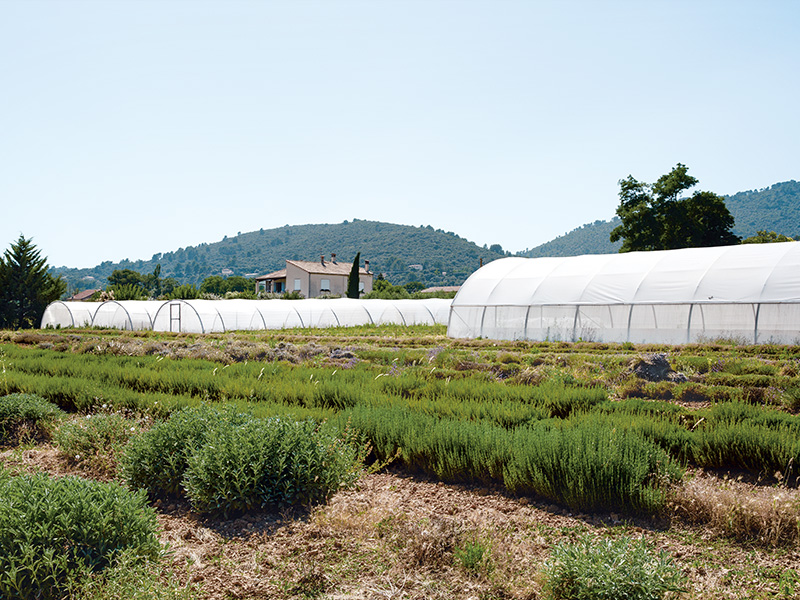
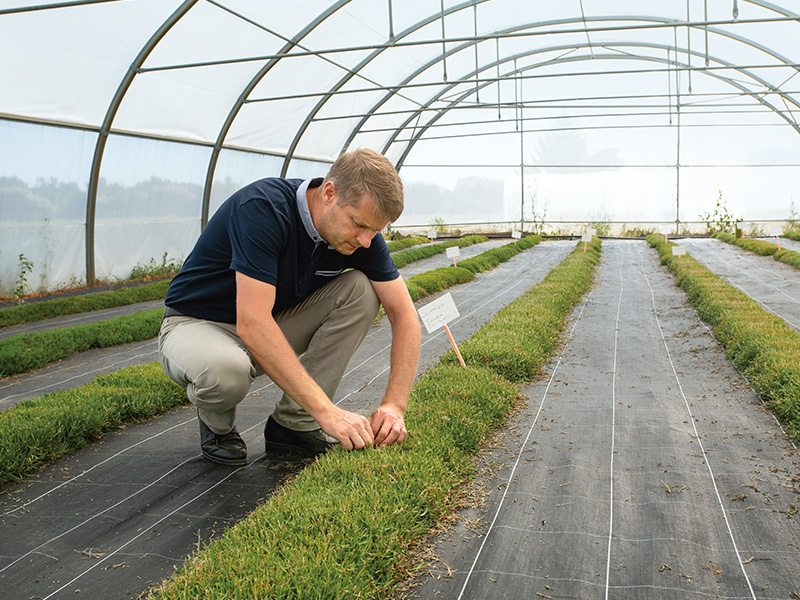
With dozens of test rows, the research institute CRIEPPAM is testing different techniques to cultivate lavender and other plants. In doing so, Bert Candaele and his team are developing scientific approaches for greater sustainability for farmers in Provence.
